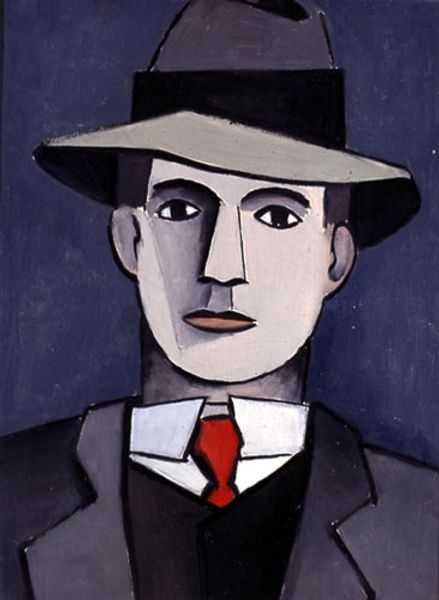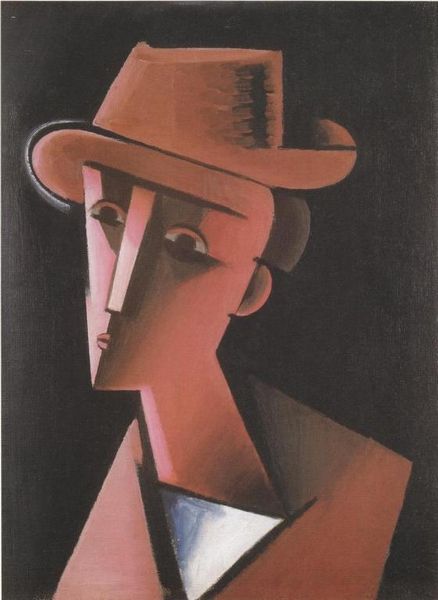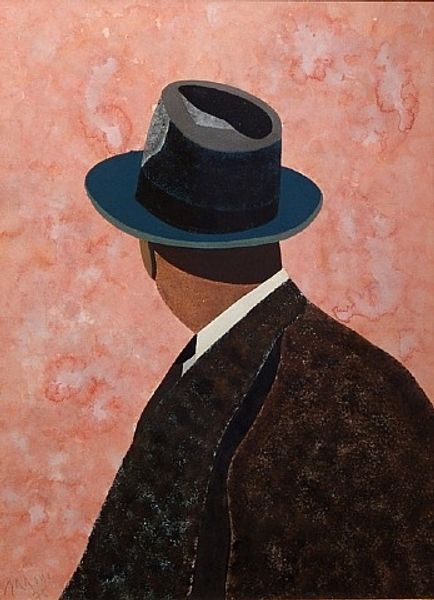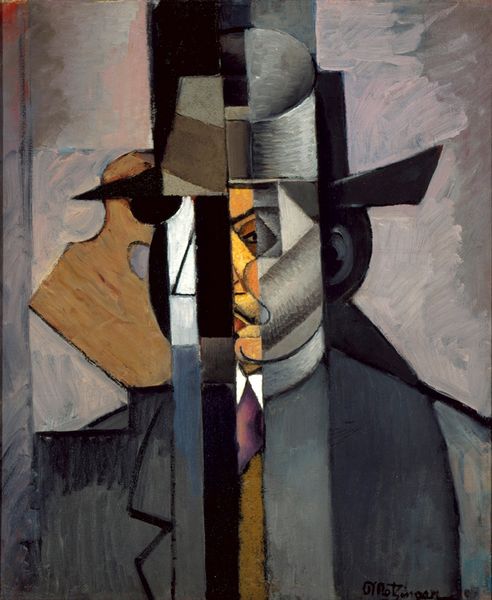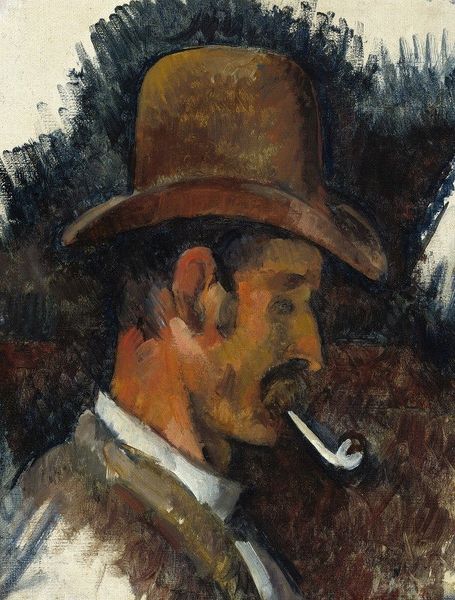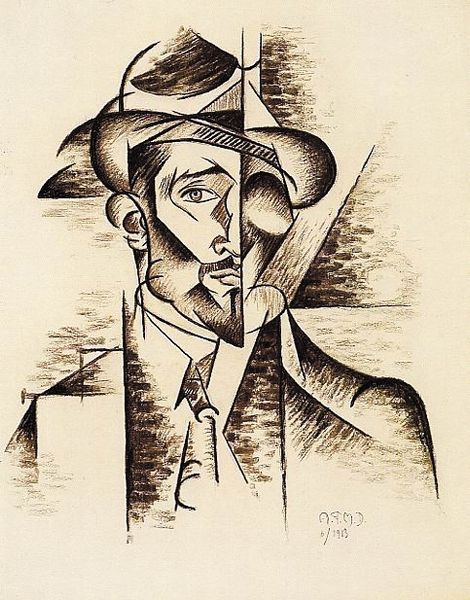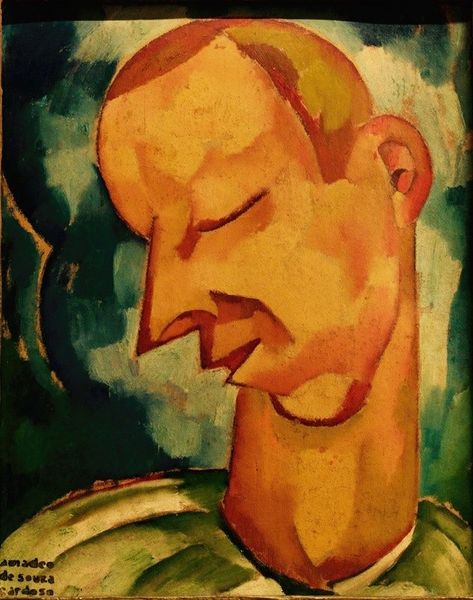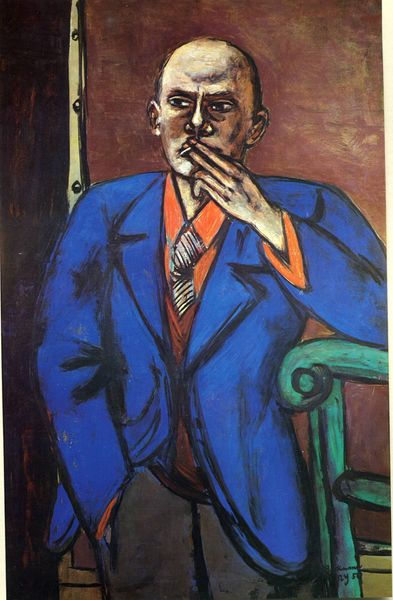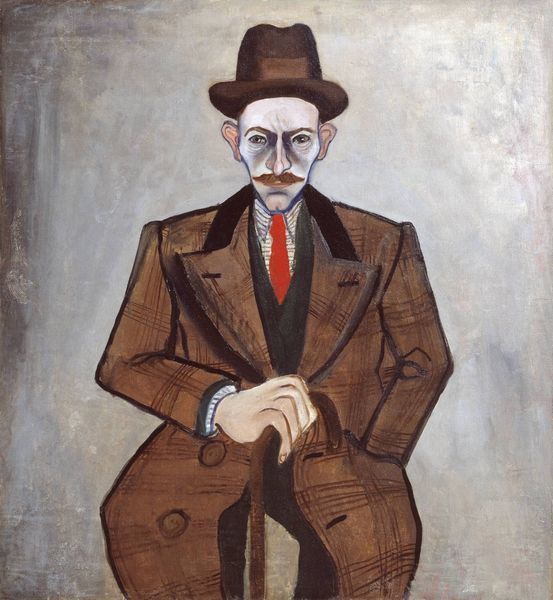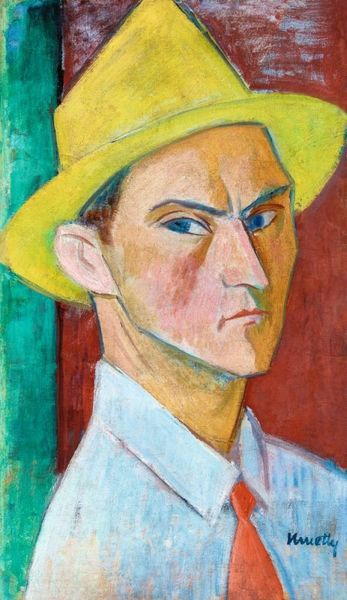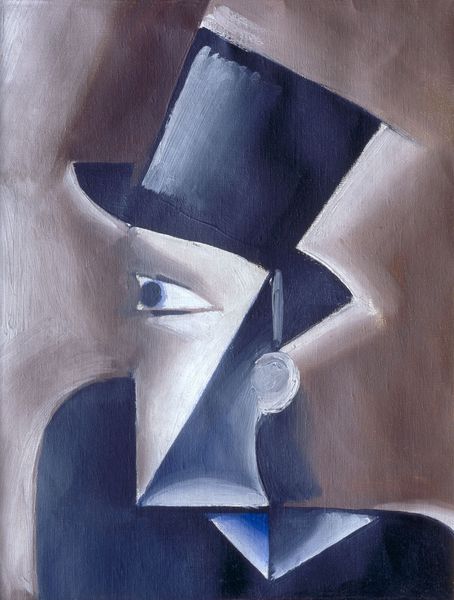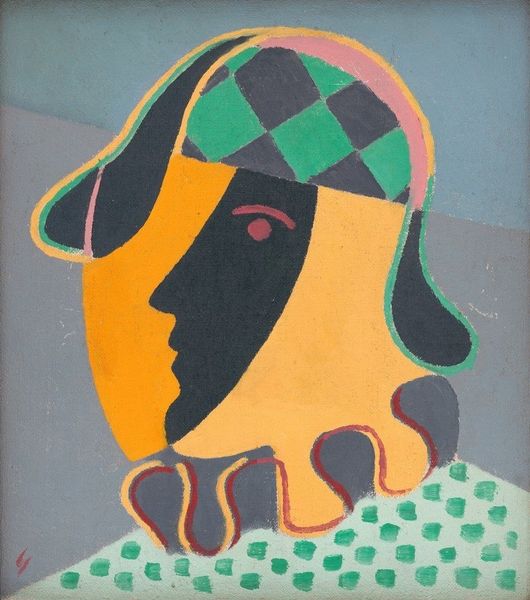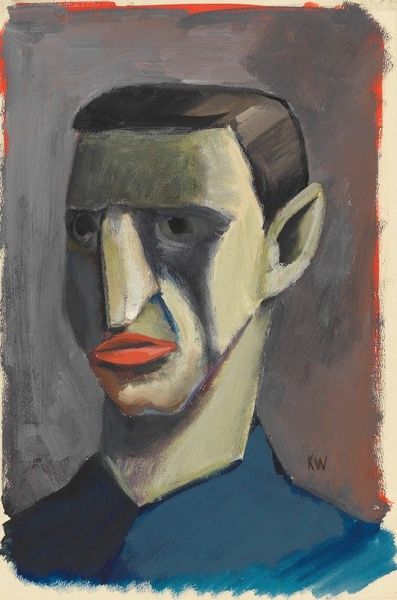
oil-paint
#
portrait
#
cubism
#
oil-paint
#
oil painting
#
modernism
Copyright: Jean Helion,Fair Use
Curator: Before us hangs Jean Helion’s "Etude" from 1939, a striking oil painting. What are your initial thoughts? Editor: There’s a cool, almost detached quality about this man's gaze. He appears stoic, even with the subtle color play around the face and neck. The severe lines of his brow, cheek, and hat lend a slightly forbidding aspect to his presence. Curator: Absolutely. Helion was deeply involved with modernist circles, embracing a form of cubism, and this piece clearly reflects that influence. His career really gained momentum in the politically fraught interwar period in Paris. Editor: It does feel emblematic of a time when traditional forms were being dismantled and rebuilt. Notice how the geometric forms simplify the human face, presenting a kind of everyman – but is it, or is it almost an icon? It seems to lack conventional individuality, yet the angles convey a psychological depth. It makes you wonder what feelings or experiences are hidden in the face of social change. Curator: That resonates with Helion’s own experiences; his art increasingly took a political turn following his military service in the war and subsequent imprisonment. This piece predates that time but does share that theme. Its muted tones could perhaps hint at the uncertain mood then percolating through Europe. We are certainly witness to the emergence of this new social understanding. Editor: Yes, the color choices definitely contribute to this overall tone. But tell me about that curious hat, those three square cubes? Does that form offer insight? Or is that merely the architectural landscape from which he exists? Curator: That's where it gets interesting! This simple, geometric shape almost overshadows him. Whether it's the architecture he identifies with or comments upon the changing times, he almost exists only as its vehicle of expression. This work feels like Helion finding his visual voice amidst a period of enormous change, as this would shift with his experiences during wartime. Editor: So, the painting becomes more than just a study of a man; it embodies the weight of historical pressures, even as it flattens our view of the personal, inner man to make way for an era's symbolism. Curator: Exactly. Helion captures not just a moment, but a feeling on the eve of something vast. Editor: Indeed, leaving us to contemplate both individual strength and fragility of the human in a period of conflict and chaos.
Comments
No comments
Be the first to comment and join the conversation on the ultimate creative platform.
